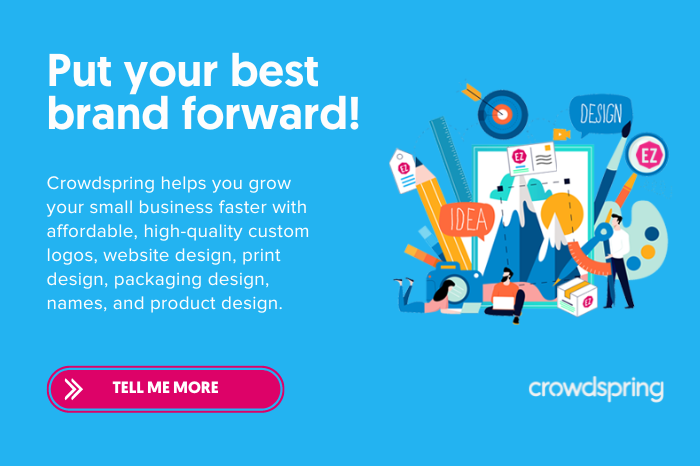Product Design Strategies for a Sustainable Future


Climate change is on everyone’s minds.
And it should be. After all, this is the only planet we have.
Keeping Earth healthy impacts everyone.
But, even if you’re not convinced that climate change is a real problem, there’s still plenty of reason to prioritize a greener, sustainable future. A 2017 peer-reviewed study in the Lancet revealed that pollution continues to be a major global health concern.
According to the study, pollution was responsible for roughly 9 million premature deaths in 2015. This makes pollution the “largest environmental cause of disease and death in the world today.”
No matter how you look at it, poisoning the air, water, and soil we all rely on to survive is not a good idea.
The great news is that product companies and designers are in a prime position to make a positive impact.
SolidWorks, a developer of 3D design software, points out in their Guide to Sustainable Design:
In the midst of the myriad sustainability tools, techniques, global and local activities, and corporate initiatives the product designer plays a key role. This person has an impact in the pivotal stage where decisions are made about what inputs are needed, how they must be processed, what the product’s lifecycle looks like, and what its end of life looks like. Engineering for sustainability early in the design process creates a trajectory that can lock in the benefits from the beginning…
Companies designing products and product designers can protect our planet – and people’s health – through sustainable design choices. With new regulations like the Renewable Energy Directive III in Europe, the push toward renewable energy and sustainable practices is stronger than ever.
But what is sustainable design?
The World Commission on Environment and Development defines sustainable design or development as:
…development that meets the needs of the present without compromising the ability of future generations to meet their own needs.
When creating new products, companies and product designers can advocate for using green tech and materials and design products that minimize waste and energy consumption.
We can all agree that selling products is great, but designing and selling products that support global health instead of undermining it is even better. Challenge yourself to design a better tomorrow with these proven green product design strategies for a more sustainable future.
Design for Improved Product Lifecycle
One of the most effective ways to design greener products is to think beyond the product itself and optimize its entire “lifecycle.” Every product goes through a lifecycle of at least four stages:
- Manufacturing
- Transportation
- Use
- Disposal
Each stage offers opportunities to create or minimize waste and consume or save energy.
So start your design process by taking a step back to reflect on the lifecycle of your product. Find the lifecycle phases with the biggest negative impacts and focus on improving those in your design process.

We just emailed the info to you.
Here are some questions to consider when examining a product’s lifecycle:
- How much energy is needed to…
- acquire the raw materials?
- assemble the product?
- transport the product to retail locations or ship it to consumers’ homes?
- How much energy does the product consume?
- How much waste does the manufacturing process produce?
- Will the product be recycled or repurposed at the end of its life?
- Will the product biodegrade quickly?
Once you know the answers to these questions, you can identify the biggest sustainability pain points.
Generally, the more energy expended or waste produced, the more negative the impact on our environment. So, target those areas first.
“Green” product design doesn’t just mean avoiding toxic chemicals and building from recycled materials. The product’s manufacture, transport, and operation also impact the product’s sustainability.
Find design solutions to decrease the highest instances of energy expenditure and waste during your product’s lifetime. Then, ask yourself what will happen to the product when that life ends.
Consider these options to keep your product out of landfills:
Cradle to Cradle
This approach, popularized by William McDonough and Dr. Micahel Braungart, invites the designer to consider ways that their product can transition into a new life when its current one ends. Think of it as reincarnation for products.
Traditionally, products were designed to have a finite end to their life. After that, the product goes to a landfill. This “cradle to grave” lifecycle isn’t great. Cradle to cradle thinking plans for your product’s next life.
Plan to recycle your product into something entirely new, remove and refurbish components for use in a new device, or even turn it into fuel to produce something else. As the product designer, the choice is yours, and while it takes some planning and thinking, many companies and designers have successfully executed cradle-to-cradle product design strategies.
And don’t forget sustainable packaging design. After all, the packaging is typically thrown away once your product is unboxed.
Design for Disassembly
The design for disassembly is pretty self-explanatory. This means that accessing the later use of the components elsewhere is easy. This strategy supports cradle-to-cradle thinking.
If it’s too hard to take your product apart, it may never live the second or third life you had dreamed of in your cradle-to-cradle planning.
Lifecycle planning is complex, and we can’t claim to offer all the answers here. But keep it in mind as you design your next products. If you want to learn more, Check out these awesome resources from SolidWorks and AutoDesk.
Choose Green Materials
The most obvious way to design and package a more sustainable and eco-friendly product is to choose “green” materials.
Items made of plastics that won’t decompose for thousands of years or filled with toxins that will leach into the environment as they decompose are clearly not great choices.
Here’s what you should look for when choosing materials for your next product design…
Your first criteria to check when choosing product materials is how it will function in the role you’ve chosen for it?
For instance, pine isn’t a great material for a tea kettle unless you like your tea with a smoky flavor (and eventually all over your stovetop). But, if the answer to that question is yes, consider this sustainability checklist.
Look for materials that are:
- Non-toxic. I don’t like being poisoned – do you like being poisoned? Enough said.
- Abundant. Materials that exist in large quantities are a better, more sustainable choice. Avoid rare materials, or you risk completely depleting a resource from our planet. As material becomes more scarce, the price tends to skyrocket. This makes abundant materials a financially wise choice, as well.
- Easily Reproduced. Materials that can be easily reproduced are, by definition, sustainable. Think of wood (which can be grown, harvested, and regrown) instead of coal (a finite resource), which will inevitably run out.
- Rapidly Renewable Materials. Rapidly renewable materials are not only reproducible but also quick to reproduce. These materials (like bamboo, cotton, natural rubber, and cork) are awesome choices for greener designs. Their speedy rate of reproduction makes them a reliable, sustainable resource.
- Low Waste. Some materials create far more waste to produce than others. For instance, it takes 85 lbs of material to create 1 lb of virgin aluminum, but only 7 lbs of material to create 1 lb of virgin steel. Choose materials that produce less waste.
- Recycled, Recyclable, or Biodegradable. Choose materials that can live another life as a product or by reintegrating with the earth. Using recycled materials will create less waste and save energy (that would otherwise be expended, creating new virgin materials).
Design your next product to be built from sustainable materials. Our children’s children will thank you.
Make Choices That Reduce Consumption
The heart of sustainability is to avoid using more resources than we can replenish in a useful period. One of the easiest ways for a product designer to make more sustainable choices is by reducing the amount of materials or energy that will go into a product in the first place.
Here are a few strategies to minimize your next product’s resource consumption:
Prioritize Energy Efficiency
Plan to make your product as energy-efficient as possible. This can be done through efficient engineering, utilizing sustainable energy sources, and using materials with low embodied energy.
Materials that require less energy to produce, transport, operate, and dispose of are said to have low embodied energy. Using materials with low embodied energy, you can design products with a smaller carbon footprint. Circular Ecology’s Embodied Energy Database is available for free here.
Lightweighting
Lightweighting is a strategy that focuses on making your product with less material and lighter weight. This has a positive environmental impact across the board – from the amount of energy needed to acquire the materials to the volume of resources consumed to the amount of energy needed to transport and dispose of the product.
Several techniques exist for making products lighter. Geometry can help make products as strong as possible with as little material as possible. Hollow components can also be used wherever practical. You can learn more reinforcing strategies to support your lightweighting efforts here.
Lengthen Product Lifespan
Designing a product to last is a very effective green technique.
Think about it. Purchasing one sweater over ten years consumes fewer resources than purchasing ten sweaters over ten years. And it’s not just the resources. It’s the embodied energy of one sweater lifecycle vs. ten sweater lifecycles.
In fact, even some “green” products can be less green than a single product that lasts a long time. For instance, a single ceramic plate used over and over is a more environmentally responsible choice than a stack of disposable, biodegradable paper plates.
Lisa Smith explains in her article “The Disposable Society: An Expensive Place To Live,”
We live in an age where everything gets thrown away. From disposable cameras to disposable diapers, few products marketed to consumers are made to last. But what many consumers don’t realize is that this throw-away world was largely made by design. Manufacturers call it “planned obsolescence”.
Planned obsolescence may seem like a sound profit strategy. It’s great for revenue when people buy stuff and then have to buy more stuff shortly after. But that shouldn’t come at the cost of actual people or our planet. It’s time to flip the script and design products that last.
Sustainable Product Design Can Make a Difference:
Companies and product designers have a lot of power to make choices that positively impact our environment—and, by extension, us. This may be a whole new way of approaching a design challenge for you, but it’s worth it.
Here’s your green design checklist. Take it with you as you start your next design. Who knows how positive your next design’s environmental impact could be?!
- Optimize the product lifecycle.
- Design for disassembly and plan for your product’s next life.
- Choose materials that are abundant and sustainable.
- Make recycling part of your design strategy
- Avoid materials that increase pollution.
- Prioritize energy efficiency with:
- efficient design,
- sustainable power sources and
- materials with low embodied energy.
- Use fewer resources by lightweighting your designs as appropriate.
- Design products to last.
When faced with a seemingly insurmountable challenge like fighting global pollution we often ask ourselves, “I’m just one person, what can I do?” But companies and product designers who make responsible informed choices about the design of their products can make the world a better place for all of us.
Design Done Better
The easiest way to get affordable, high-quality custom logos, print design, web design and naming for your business.
Learn How to Grow Your Business With Beautiful Design
